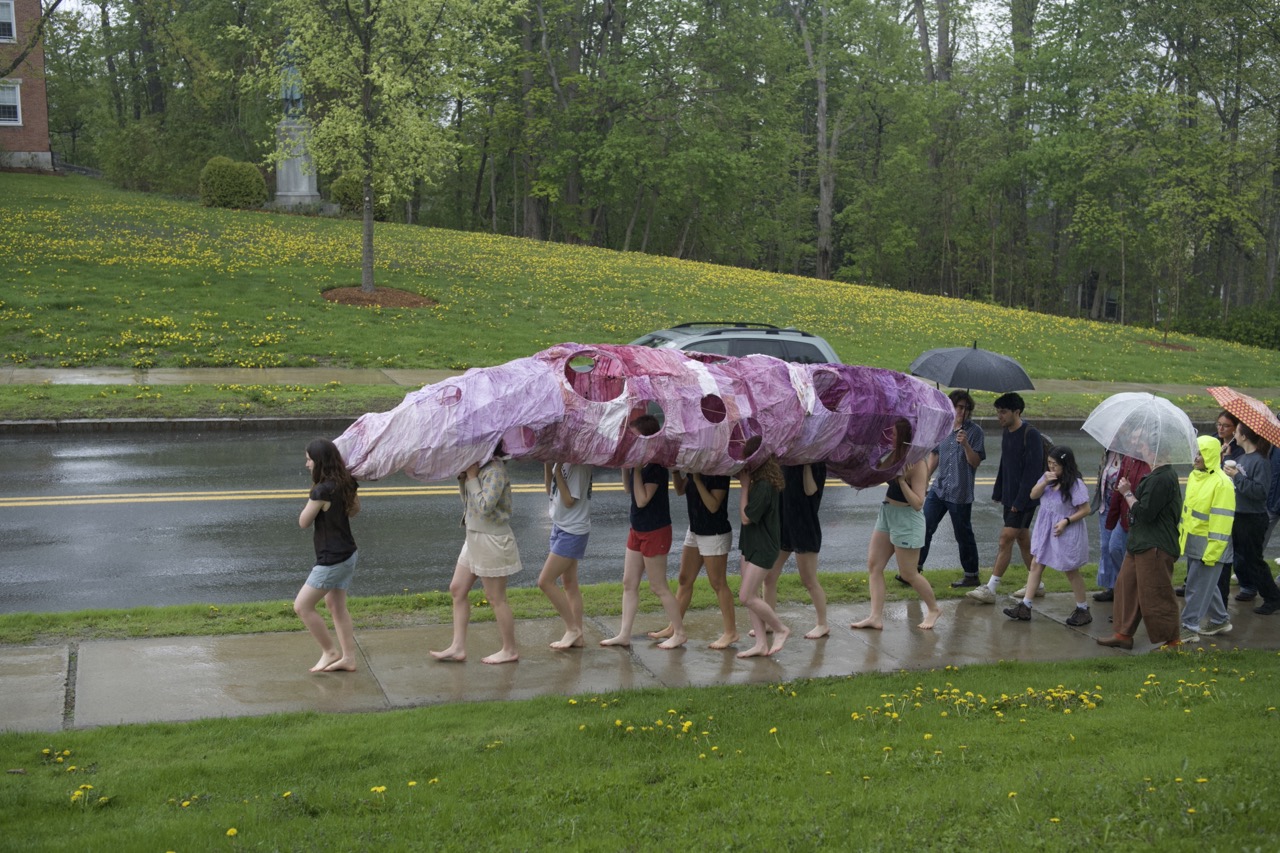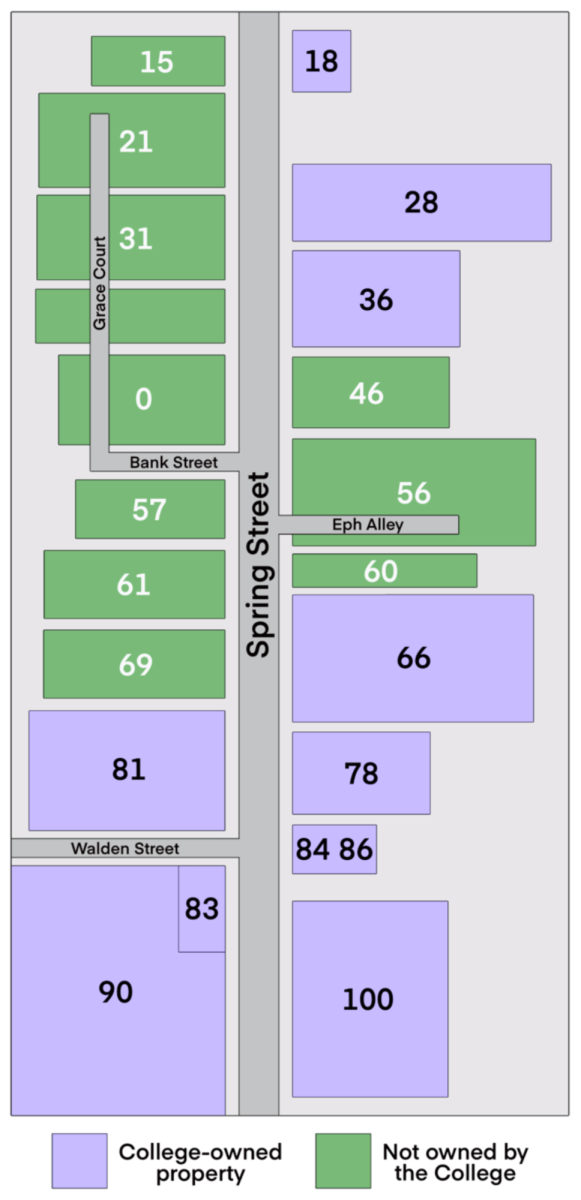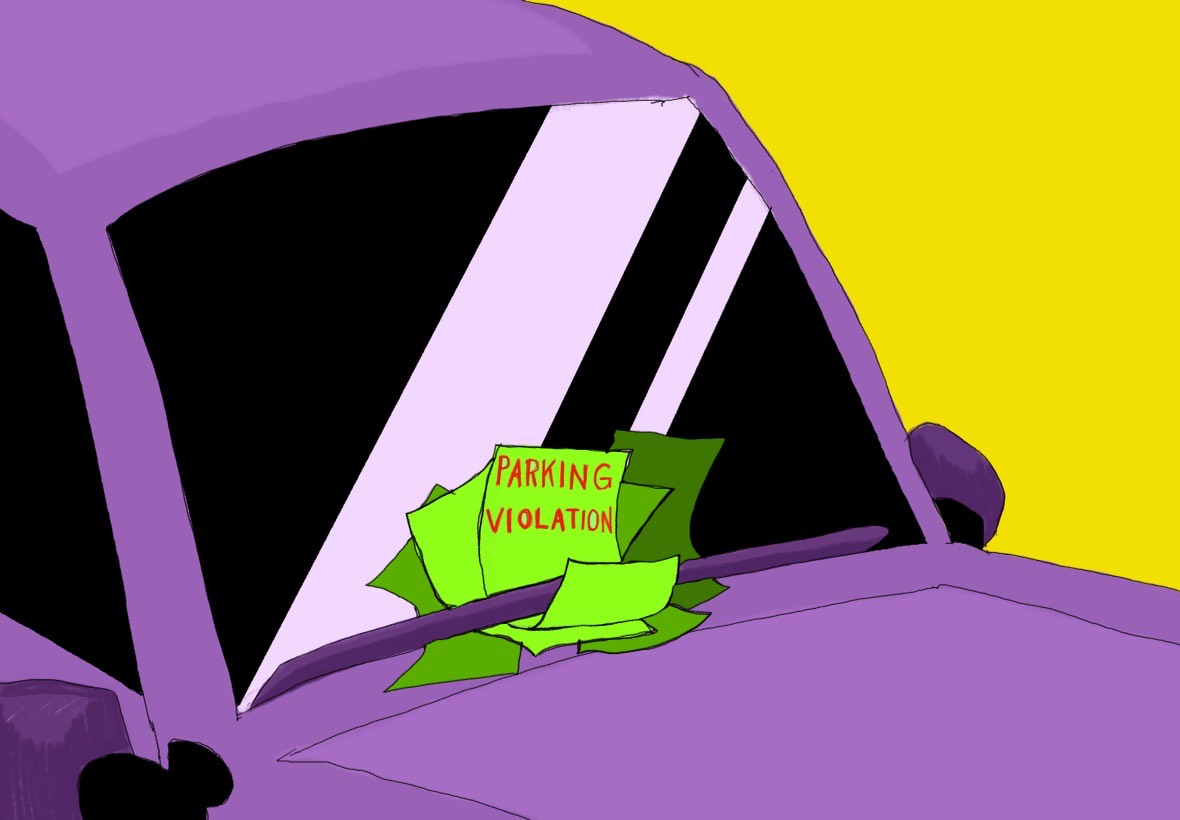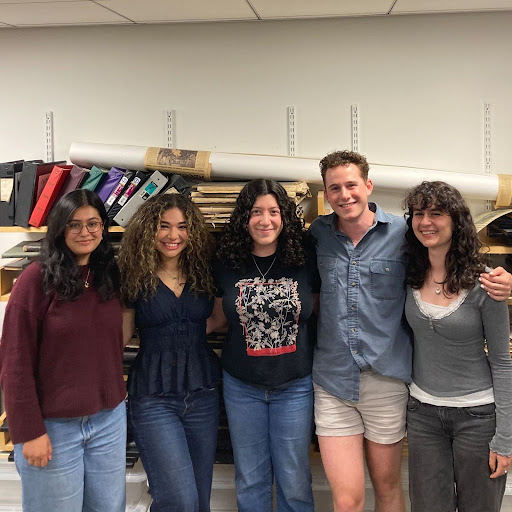
Dogs barked, students gawked, and traffic came to a standstill in Williamstown on a rainy Sunday afternoon, as a parade wound its way from Spencer Art Studio to the top of Stone Hill. At the head of the procession was a 20-foot daikon radish walking on the legs of seven barefoot students. All marched to the drumming of Chris Gontarek ’25 and Riku Nakano ’25, the root vegetable’s creator.
I was one of more than 50 people who participated in the Parade of the Giant Daikon Radish, part of Nakano’s studio art senior thesis, advised by Assistant Professor of Art Ohan Breiding. Nakano created the wearable model of the daikon, with the help of Josh Ying, over four months using a wooden reed cane frame across which she stretched repurposed fabric colored with cochineal insect dye and pleated using a sewing machine.
The undulating magenta daikon cut a striking figure in the gray and green of the archetypal Berkshire spring day. We maintained a brisk pace and upbeat attitude despite the rain which persisted throughout the parade and soaked the crowd heedless of umbrellas and raincoats. By the bottom of Spring Street, the crowd, which grew as the parade went on, had spilled out onto the road; by the bouldering barn, shoes started coming off.
Many participants were acquaintances of Nakano, celebrating the culmination of her project. “It’s been really fun to witness how she’s really developed her craft,” Artie Carpenter ’25 said in an interview with the Record.
Others were just there for the ride. “I feel like it’s a once in a lifetime opportunity to march behind an artistic rendering of a radish,” Farris Farouki ’27 said, as we passed behind Agard House.
After a muddy push up Stone Hill, the daikon was laid down on the grass. The crowd stood at attention as Nakano thanked them: “This [parade] only makes sense because you all showed up.” Her short speech was followed by a bagpipe performance by Innes Asher ’25. A participant standing to my left commented that she wasn’t expecting the event to be so elegiac.
In an interview with the Record after the parade, Nakano said that the event’s funereal undertones were unexpected but fitting. “People with umbrellas walking slowly in the rain: It [was] kind of like a funeral, carrying this large body,” she said, referring to the daikon. “That really fit well because harvest is the end of a season. It’s something to celebrate…but there’s also something to mourn there. Especially being a senior at this time of year… It’s an end of a season in our lives.”
Yet, just as present as the sense of mourning was the humorous absurdity that pervades Nakano’s work. “Her stuff is kind of absurdist. It’s bigger than life,” Carpenter said. Last year, Nakano hung hand-sewn, larger-than-life underwear on Sawyer Quad, in a piece entitled “Laundry Day.”
Nakano explained that, in Japanese cuisine, daikon is traditionally a vehicle for other flavors. “It’s so absorbent, and it’s such a companion to other dishes,” she said. “In terms of the sculpture, the daikon can’t really stand without other people’s support. I don’t think it’s meant to stand on its own.”
“I [also] really liked [the] image of something growing underground, diligently and quietly,” she added. But her choice of daikon was not all about symbolism. “I just find the vegetable very endearing and somewhat relatable,” she said.
Her choice of depicting the daikon — which in Japan is typically white and green — with bright purple hues was both symbolic and aesthetic. “I really wanted to choose a daikon that’s somewhat local to Williamstown, because the performance is so site-specific,” she said. “Also, I liked the vibrancy, and I thought it would be nice to have outside.”
Before the paraders dispersed, Nakano handed out slices of purple daikon that she pickled herself. “I was working on the [sculpture] daikon past midnight. Then I went home…and I felt crazy chopping the [edible] daikon at 2 a.m.,” she said afterward.
“Pickling is like preserving something that doesn’t have its former shape anymore… and the genre of performance art is kind of about that too,” she added. “Of course, the live performance is the main part… [But] a big part of performance art is…keeping the piece alive in a different form after it happens.”
A version of Nakano’s thesis, along with other senior studio art theses, will be on display at the senior thesis exhibit “With Warmth” which will open on May 16 at the Williams College Museum of Art.








